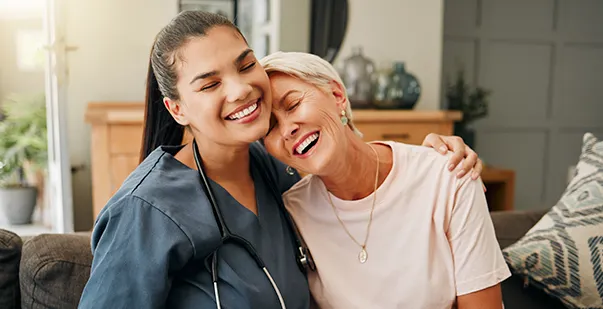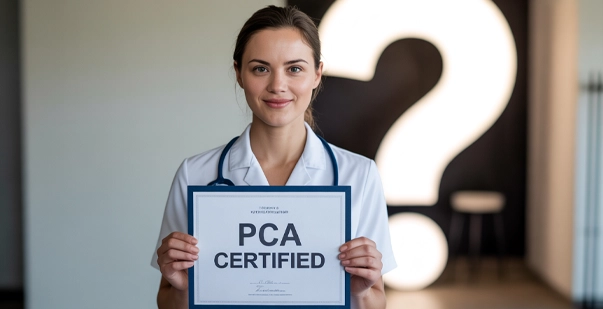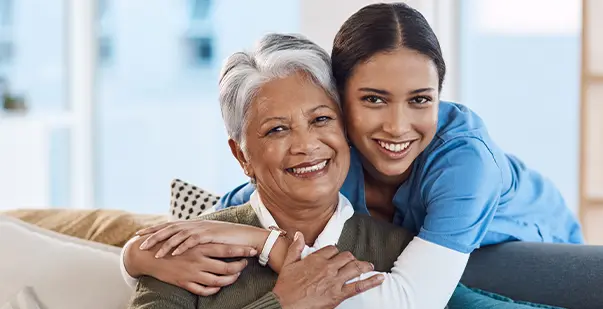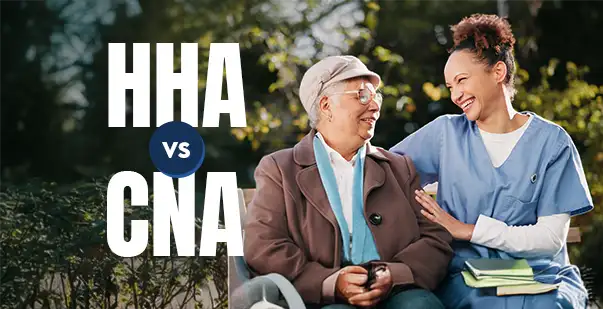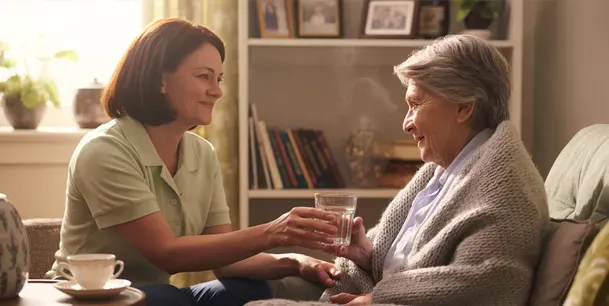The World Health Organization has defined Home care as providing care services at home by formal or informal caregivers. Home Caregivers help with daily living for elderly adults, disabled people, and persons suffering from chronic diseases. They help with everyday tasks like cooking, cleaning, and even personal care like bathing or dressing.
Home caregiving is growing rapidly. Did you know that over 53 million Americans provide unpaid care to family members? And with an aging population, professional caregivers are also in high demand. According to recent studies, the home care industry is expected to grow by 9% annually over the next five years. Read on to explore what they do, why they matter, and how they impact lives in ways big and small.
What Is a Home Caregiver?
A home caregiver is someone who helps people who can’t fully take care of themselves. They assist children, elderly people, or those with disabilities or chronic illnesses. Home caregivers can be family members, friends, or trained professionals like nurses or nursing assistants. Their main job is to make life easier and safer for the person they care for. They help with everyday tasks like bathing, eating, dressing, and taking medicines. They might also cook meals, do laundry, or even help with grocery shopping.
Home caregivers are not just helpers, they are also companions. They offer emotional support, listen to stories, and keep people company. They may handle bills, manage appointments, and arrange medical care too. Many people prefer staying in their homes rather than moving to a care facility. Home caregivers make this possible. They play a big role in making sure their loved ones feel comfortable, happy, and cared for in familiar surroundings.
Read More: How to Become a Home Health Aide: A Beginner's Guide
What Are The Responsibilities of Home Caregivers?
According to an AARP survey, 3 out of 4 Americans over the age of 50 wish to remain in their homes as long as possible. They prefer to stay in their place due to emotional connection and to maintain independence. This is where home caregivers come into the picture. They are helpers, supporters, and companions. Their role is to ensure the person they care for feels safe, comfortable, and valued. From daily tasks to emotional care, their responsibilities cover a wide range. Let’s break down their key duties:
Personal Hygiene Assistance
Assisting with personal hygiene is perhaps one of the most integral parts of the care process. This includes activities such as bathing, toileting, grooming, and dressing. A gentle caregiver's touch and sensitive approach transform potentially uncomfortable procedures into dignified moments for the care receiver. They also ensure proper skin care and monitor for any worrying changes in body status during these practices.
Medication Management
Keeping track of medications is very important for the health of the care recipient. Home caregivers ensure that the medications are taken at the right time and at the right dosage. They keep medication logs, monitor side effects, and communicate with healthcare providers about any concerns.
Meal Planning and Nutrition
In-home caregivers also plan and prepare meals that respect dietary restrictions and preferences. They monitor food intake, ensure adequate hydration, and make mealtime a pleasant experience. Sometimes they may need to help feed or encourage eating when appetite is low. They also monitor for food allergies and other restrictions prescribed by healthcare providers.
Mobility Support
Home caregivers also assist with tasks such as moving the care receiver from bed to chair, walking, and using mobility aids such as walkers or wheelchairs. They are taught proper body mechanics to protect themselves and their care recipients from harm. They can also assist in range-of-motion exercises when physical therapists prescribe them.
Household Management
A clean environment is important to well-being. In-home caregivers assist with light housekeeping and laundry and ensure the living environment is safe. They clear walkways, sanitize living areas, and remove potential hazards. This involves changing bed linens, doing dishes, and keeping the living space neat and comfortable for the care recipient.
Health Monitoring
The home caregivers also constantly monitor vital signs, watch symptoms and catch slight changes in condition. They also maintain daily logs and communicate any health-related changes with the healthcare provider. It usually prevents a small problem from turning into a complicated problem.
Companionship and Emotional Support
Beyond physical care, home caregivers also provide emotional support. They engage in conversation, share activities, and create meaningful connections. They might read books, play games, or simply listen to their care recipient's stories. This social interaction helps prevent isolation and depression while maintaining cognitive function.
Transportation and Scheduling
Managing appointments and providing transportation keeps care recipients connected to their healthcare team and community. Caregivers arrange medical visits, drive to appointments, and may help with shopping or social activities. They maintain calendars, ensure timely arrival, and assist with mobility during outings.
How To Become a Home Caregiver?
Becoming a home caregiver is a rewarding journey. It’s about helping others while building valuable skills. Caregiving doesn’t always require a medical degree, but training and certifications can make you more qualified. Here’s a step-by-step guide to becoming a home caregiver in the USA:
Read More: How Long Does It Take to Become a Certified Caregiver?
Step 1: Develop Essential Skills
Caregivers need compassion, patience, and communication skills. You will also need to be organized and good at time management. These skills help you connect with those you care for and manage their needs effectively.
Step 2: Meet Basic Requirements
In most states, you must be at least 18 years old and have a high school diploma or equivalent. A valid driver’s license and a clean background check are often required too.
Step 3: Get Certified
Some states require certification, such as a Certified Nursing Assistant (CNA) license. Training programs, which can take 4–12 weeks, teach caregiving basics like first aid, CPR, and personal care tasks.
Step 4: Gain Experience
Start with volunteer work or informal caregiving roles. This helps you build experience and confidence. Many agencies and families prefer caregivers with hands-on experience.
Step 5: Apply for Jobs or Register with Agencies
Look for caregiving jobs through local agencies, hospitals, or online job boards. Registering with a licensed home care agency can connect you with clients and provide ongoing support.
Step 6: Continue Learning
Caregiving trends and needs change over time. Take additional courses or certifications, like Home Health Aide (HHA) training, to stay updated. This can also improve your job prospects.
Step 7: Understand Legal and Tax Responsibilities
If you work independently, learn about tax and legal requirements. Agencies often handle this for you, but independent caregivers need to manage it themselves.
Read More: How to Become a Certified Caregiver for a Family Member: A Step-by-Step Guide
Skills Needed to Become a Home Caregiver
Home caregivers face many challenges and obstacles in performing daily activities for elderly people. To overcome these challenges and to acquire knowledge, certain skills are needed to become a good home caregiver:
Read More: What is Caregiver Certification and Why is it Important?
Every caregiver should communicate clearly, understandably, and effectively, which promotes a trusting relationship between home caregivers and patients. Additionally, they should have proper medical knowledge to communicate with healthcare professionals about patients' health status.
Being empathetic and compassionate, caregivers can bring joy to people who need emotional support from them. A sense of empathy helps caregivers to understand the needs of disabled patients or elderly people. Additionally, compassion allows them to connect emotionally with the patient to provide comfort and safety at tough times.
Observation and Attention to detail
Home caregivers can give the highest care through exceptional detail-oriented and observational skills. These skills matter the most because any changes in health condition need to be addressed on time without any delays for a positive health outcome.
Physical Stamina and Strength
Caregivers must be in good physical health to provide the best unmatched care possible. Physical stamina and strength are required to lift disabled or elderly patients while taking baths, changing clothes, feeding, and maintaining personal hygiene. These skills also uplift caregivers' emotional well-being during burnout.
Problem-solving and Critical thinking
Home caregivers are the first to encounter sudden or unexpected changes in patients or elderly people. Thus, they should have the aptitude to assess critical situations and act accordingly. By using these skills, they can act immediately, identify and implement needed solutions for various emergency scenarios.
Cultural Competency and Respect
Caregivers from various backgrounds work with individuals from diverse backgrounds. Recognizing and respecting cultural differences between caregivers and patients is essential for providing a strong and respectful work environment.
Become A Home Caregiver Today!
Home caregivers do much more than just help with daily tasks. They bring hope, comfort, and independence to elderly and disabled people who want to stay in their own homes. These dedicated individuals need strong skills to do their best work. That's why organizations across the country are stepping up to offer special training programs. From learning basic medical skills to mastering the latest health technologies, caregivers can grow into confident professionals who handle everyday care and emergencies with equal expertise.
Want to make a real difference in someone's life? Consider taking a professional caregiver course. Modern training programs teach you both practical skills and the art of compassionate care.
References:
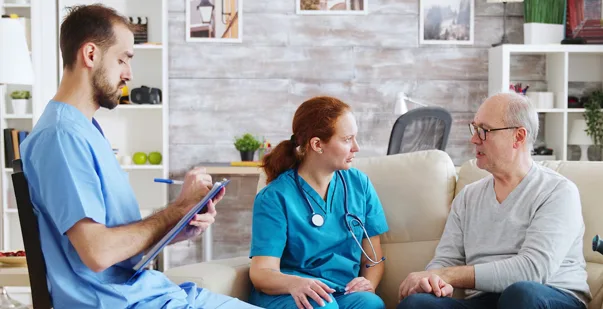
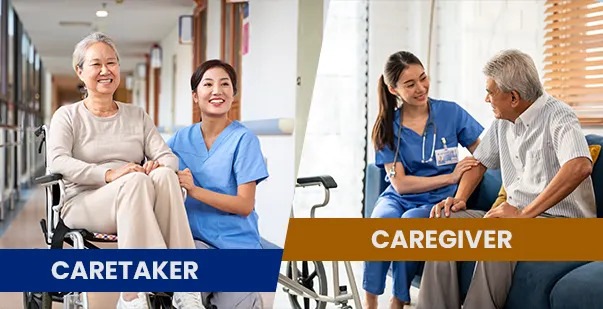
.webp)

